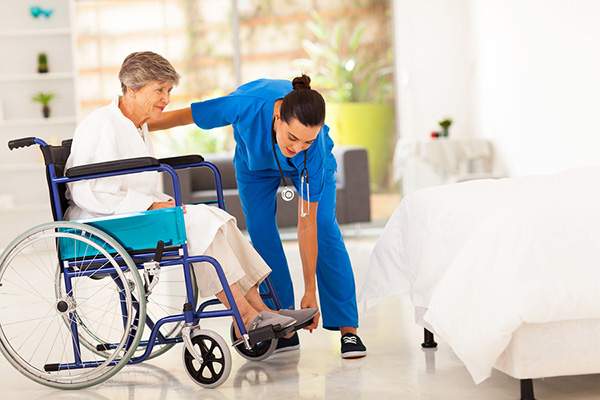People with limited range of motion due to medical conditions like injury and cerebrovascular accident need assistance in ambulation. The following are some pointers on how the carer will best transfer the person from bed to wheelchair and vice versa.
Moving a Person from Bed to Wheelchair
Some people cannot move by themselves when getting to a wheelchair. So, sometimes, another person is present to help them transfer from bed to wheelchair. As per Medline Plus, the carer explains the steps to the client. Then, the wheelchair is parked next to the bed, so it would be close to the client and the carer. Next, the brakes are put on and the footrests are moved out of the way.
The client is placed into a seated position and is rolled onto the same side as the wheelchair. Next, one of his arms are placed under the shoulders of the patient, while another one is placed behind the knee. Then, the person swings the patient’s feet off the edge of the bed; momentum is used to help the patient move into a sitting position. Next, the patient is moved to the edge of the bed; the bed is also lowered so that the feet of the client are touching the floor.
Moving the Client from Wheelchair to Bed
In transferring the client from wheelchair to bed, the person sets the bed at the lowest level, as to Head to Toe Care. Then, the wheelchair is positioned with the person’s strongest side next to the bed. Next, the wheelchair brakes are locked and the feet are removed from the foot rests. After that, the footrests are removed from the foot rests. The client also has to understand the effects of lifting and pivoting when transferring from the wheelchair to the bed. For instance, the carer says that on the count of three, he is going to help the person stand up and turn to his strong side. Then, the carer uses the bear hug technique, which is asking the person to place his arms on his shoulders as the carer places his arms around the client’s trunk. To prevent slipping, the carer brackets the client’s feet with his own feet and using the leg muscles, they stand up and the person is brought upward in a gradual motion. Then, the person is seated on the bed and his legs are brought up onto the bed. Finally, the person is positioned for safety and comfort.
Mobility is important, since it prevents a number of complications like pressure ulcers or bed sores, peneumonia, atelectasis, and blood clot formation. Hence, the aforementioned pointers will help on the best way to transfer a person from the bed to the toilet safely.













